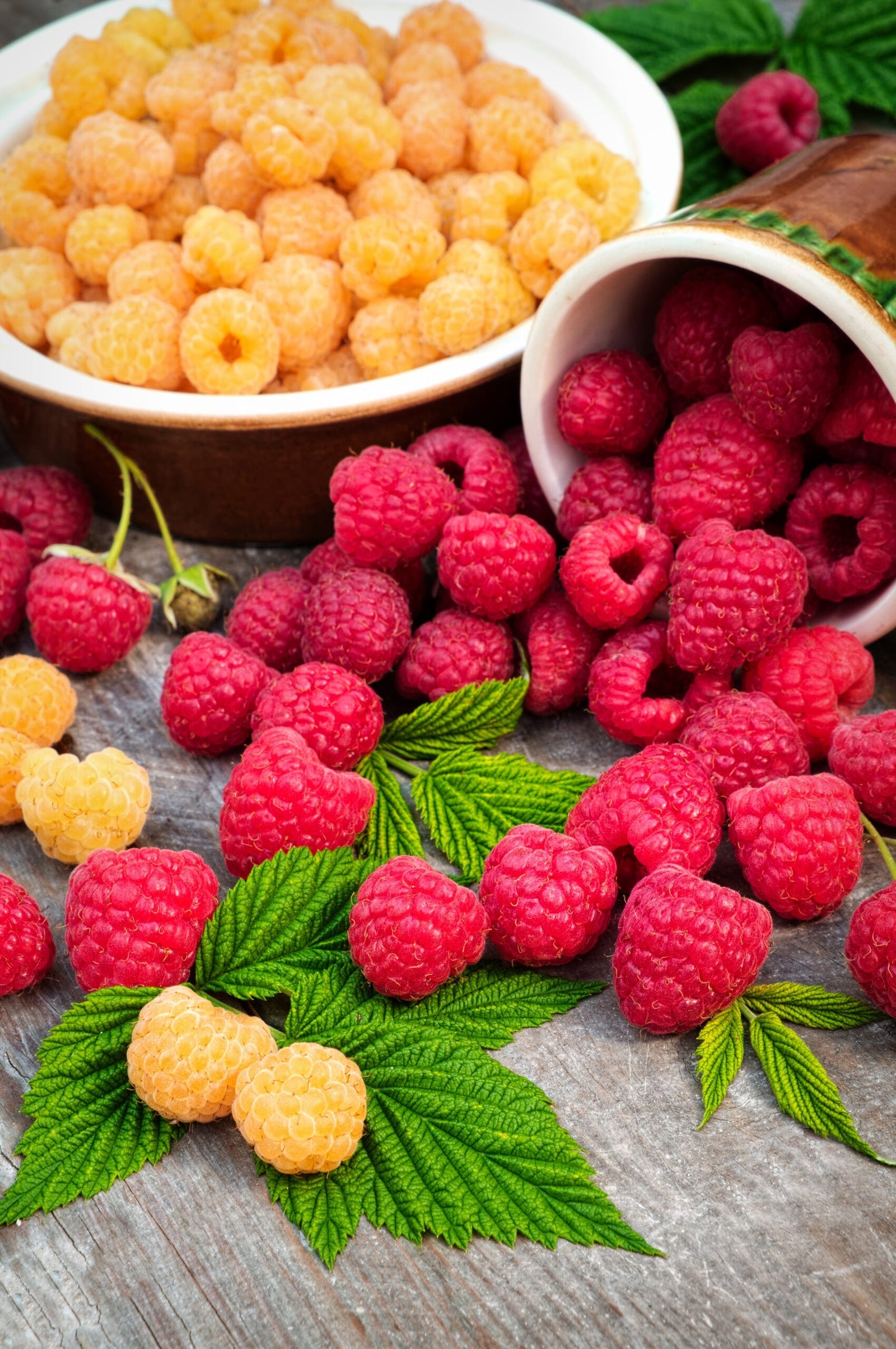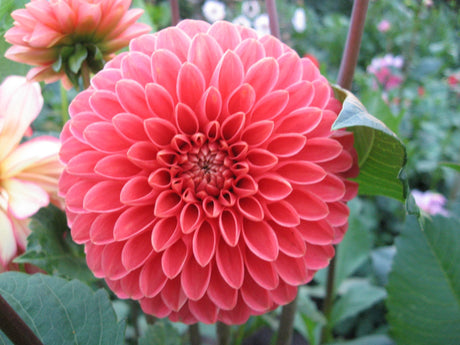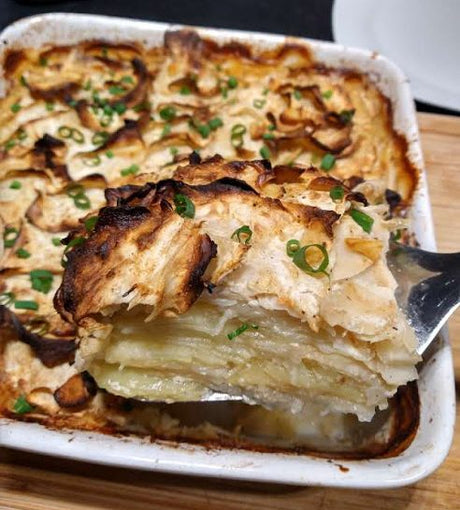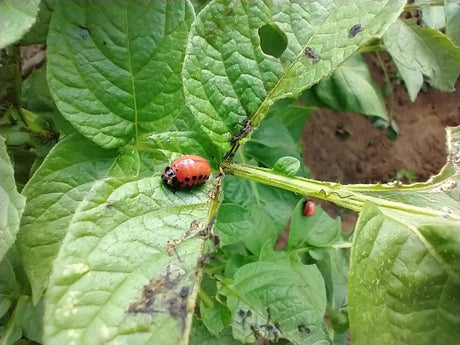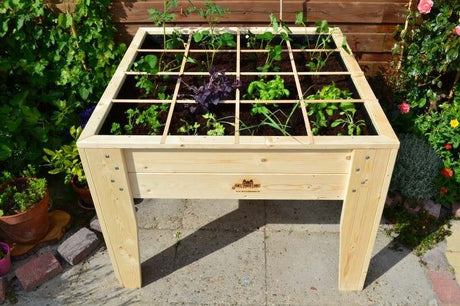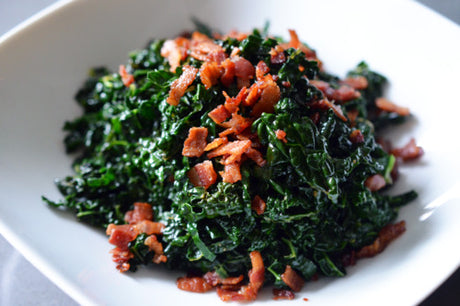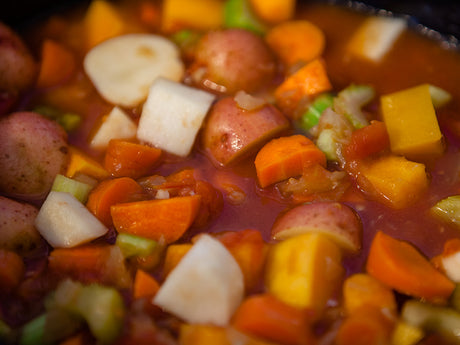Raspberry plants —my son absolutely loves them. If I counted all the punnets of raspberries he ate this summer, which I'd normally have to buy at the store, I'd probably be broke already. Planting raspberries, with a little attention, is not difficult at all and very rewarding. With a few handy tricks, they don't take up much space, so everyone, regardless of the size of their garden, can enjoy these delicious fruits. I even planted two raspberry plants in my small vegetable garden. Do you also dream of planting raspberries in your own garden? Then be sure to read my article. In this article, I explain the different types of raspberries and provide step-by-step instructions on how to easily grow and care for your own raspberry plants.

The raspberries melt like snow in the sun with a hungry toddler in the house ??
General information about raspberry plants
Let me start by explaining a little about raspberries. Raspberry plants belong to the Rosaceae family, in the Rubus genus. Raspberries are not only perfect for picking and eating straight from the plant, they're also delicious in jams, pies, smoothies, and drinks. Moreover, fresh raspberries are real vitamin bombs.
There are two types of raspberries, both with their own specific requirements for cultivation:
- Summer raspberries are the most common type of raspberry. Their fruits grow on the previous year's wood. They produce one harvest per season, in the summer (often June or July).
- Autumn raspberries (also called everbearing raspberries) produce raspberries on new canes. They bear fruit in the fall. Depending on how you prune them, they can also bear fruit the following summer. This means you can harvest this raspberry variety twice a year: once from the canes that grew that year, and once from the canes that grew the previous summer.
- A mix of both varieties is ideal to maximize the harvest period.
All raspberries are self-pollinating, so you only need one bush to produce fruit. They are best pollinated by bees and begin producing fruit a year after planting.
Plant raspberries in early spring or late autumn.
What do you need to plant raspberries?
- Raspberry plants
- Garden tools ( shovel , rake , etc.)
- Organic fertilizer or compost
- Mulch (straw, wood chips, or other organic material)
- Wire , stakes and a tying tool for support (if needed)
Here's how to plant raspberries:
Step 1: Choose the right location
Choose a sunny location in your garden with well-drained soil. Raspberries thrive in full sun, although they will also do well in partial shade.
Step 2: Soil preparation for planting your raspberries
Prepare your soil by thoroughly loosening it with a pitchfork . Remove any weeds and stones and ensure the soil is well loosened.
Step 3: Choose your raspberry plants

We offer raspberry plants in all kinds of colors and shapes, something for everyone.
Take a moment to browse our selection of raspberry plants. We have a wide variety of varieties, including classic red raspberries, yellow raspberries, thornless raspberries, and pot-ready raspberries. We also have some unusual varieties like Japanese wineberry, tayberry, and loganberry. Consider when you'd like to harvest your raspberries. To ensure a long harvest, it's best to plant a summer raspberry and an autumn raspberry.
Schönemann : a late-bearing summer raspberry that produces an abundance of raspberries.
Golden Everest : A beautiful yellow summer raspberry that's even more delicate in flavor than classic red raspberries. Their yellow color makes them less attractive to birds.
Tayberry : A cross between a blackberry and a raspberry. The best of both worlds. The plant produces large, deliciously sweet, aromatic, deep purple fruits up to 5 cm long from July to September .
Loganberry : Like a tayberry, a cross between a blackberry and a raspberry. These raspberries have a tart, juicy flavor and are highly resistant to disease and severe frost . This plant produces fruit for over 15 years.
Enrosadira : The absolute winner among raspberries. It blooms twice a year, so you can harvest twice a year: once in June and a second time starting in August. My colleague Tom's is his favorite raspberry.
Autumn Bliss : A highly productive autumn raspberry. An easy-to-grow variety that produces large fruits.
Black Jewel : As the name suggests, a raspberry that produces dark purple to black fruits. A very special raspberry with a spicy, fresh flavor.
Ruby Beauty : A unique dwarf summer raspberry that grows only 50 cm tall. Ideal for growing in pots.
Glen Ample : A thornless raspberry variety. Ideal for those who love raspberries but don't mind being pricked by the plant.
Glen Coe : A summer raspberry that produces dark purple raspberries. The flavor is somewhere between a raspberry and a blackberry.
Japanese wineberry : These look-alike raspberries are orange-red in color, delicious on their own but also particularly tasty in jam. A favorite in our house. They're slightly smaller than the average raspberry, perfect for little toddlers' hands.

